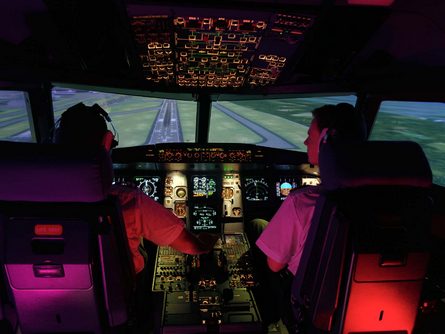Airline accidents attributed to pilot error declined significantly between 1983 and 2002, according to new US research. While the overall rate of US domestic airline mishaps remained stable during that time, the proportion involving pilot error decreased 40%, say researchers at the Johns Hopkins Bloomberg School of Public Health.
The researchers also found a 71% reduction in the rate of mishaps related to poor decision-making by pilots, They attribute the decline to better training and improvements in technology. The study findings are published in the January 2008 edition of Aviation, Space and Environmental Medicine.
Lead author Susan Baker says the study examined 558 crashes and other mishaps involving US domestic air carriers on scheduled and unscheduled flights under Part 121 operating regulations. They were drawn from the National Transportation Safety Board database of accidents and incidents involving fatalities and injuries in the air and on the ground, she says.
Mishaps outside the USA, those caused by criminal acts and those for which there was no NTSB investigation data were not included in the study, Baker says.

© Thales
Pilot error was noted in 180 - 32% - of the 558 mishaps studied, but declined from 42% in the five-year period 1983-1987 to 36% in the 1988-1992 period, 31% in 1993-1997 and 25% in 1998-2002, an overall decrease of 40%.
The results show the rate per 10 million departures for mishaps involving pilot error declined from 14.2 for 1983-1987 to 8.5 for 1998-2002. The overall mishap rate was essentially unchanged at 34 for 1983-1987 and 33.7 for 1999-2002.
According to the study, the most common types of pilot error were carelessness (26%), poor decisions (25%), mishandling aircraft kinetics (21% ) and poor crew interaction (11%).
"Much of the decrease in pilot-error mishaps was associated with improved decision-making by pilots," says the study. In particular, weather-related mishaps involving pilot error dropped 76% from the period 1983-1987 to 1998-2002.
Mishaps caused by mishandling wind or runway conditions fell 78%. Those caused by poor crew interaction declined 68%.
Pilot error was most common during taxiing, take-off, final approach or landing of the aircraft, the researchers say. But mishaps during take-off declined 70% over the period studied.
The study was part of a larger project focused on age-associated changes in commercial pilots and supported by grants from the National Institutes for Aging. That work found no age-related differences in mishap rates involving pilot error, Baker says.
Source: FlightGlobal.com



















